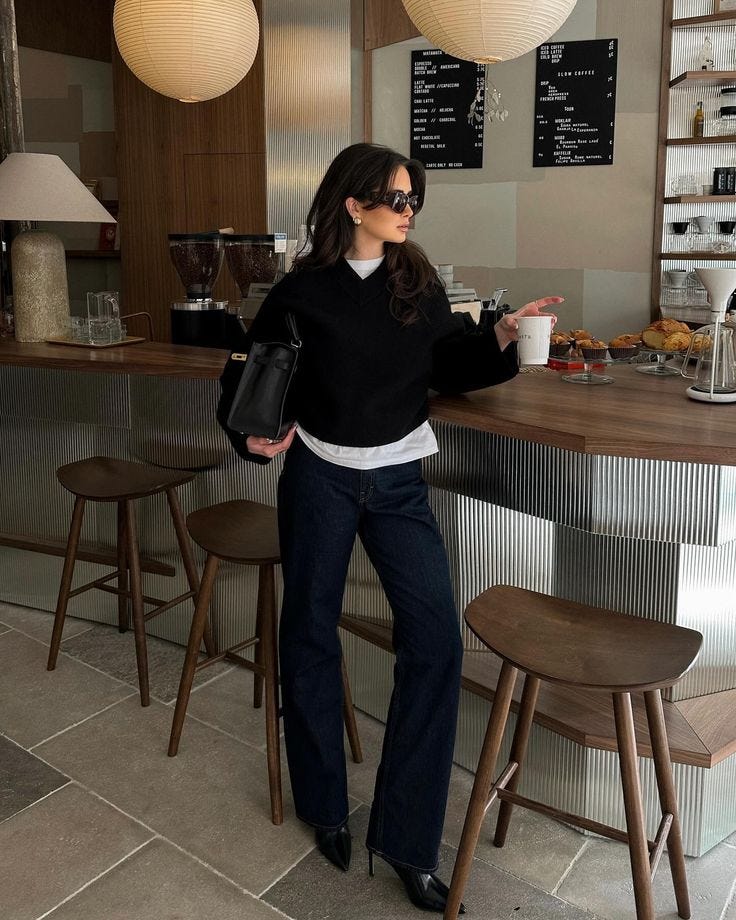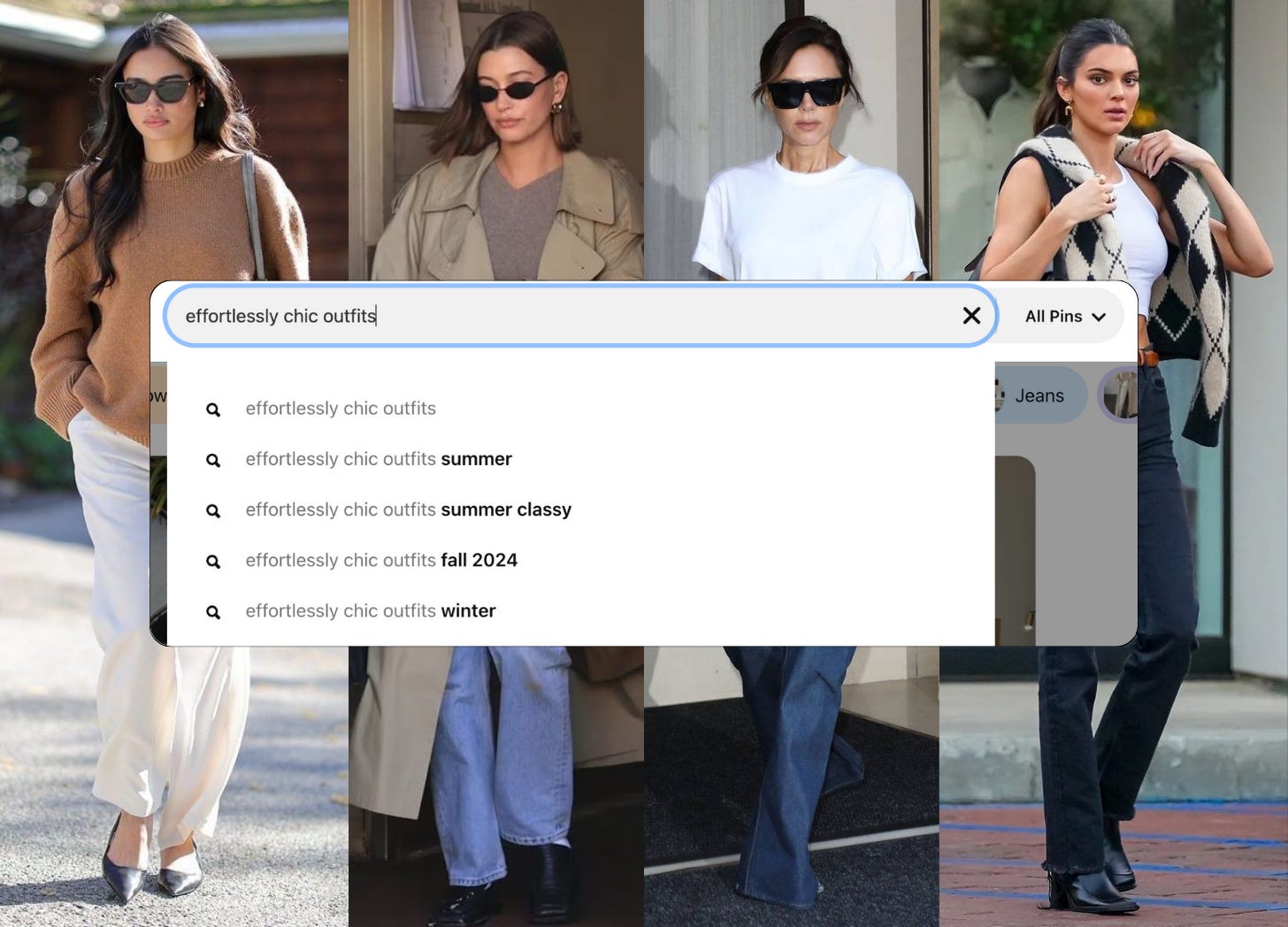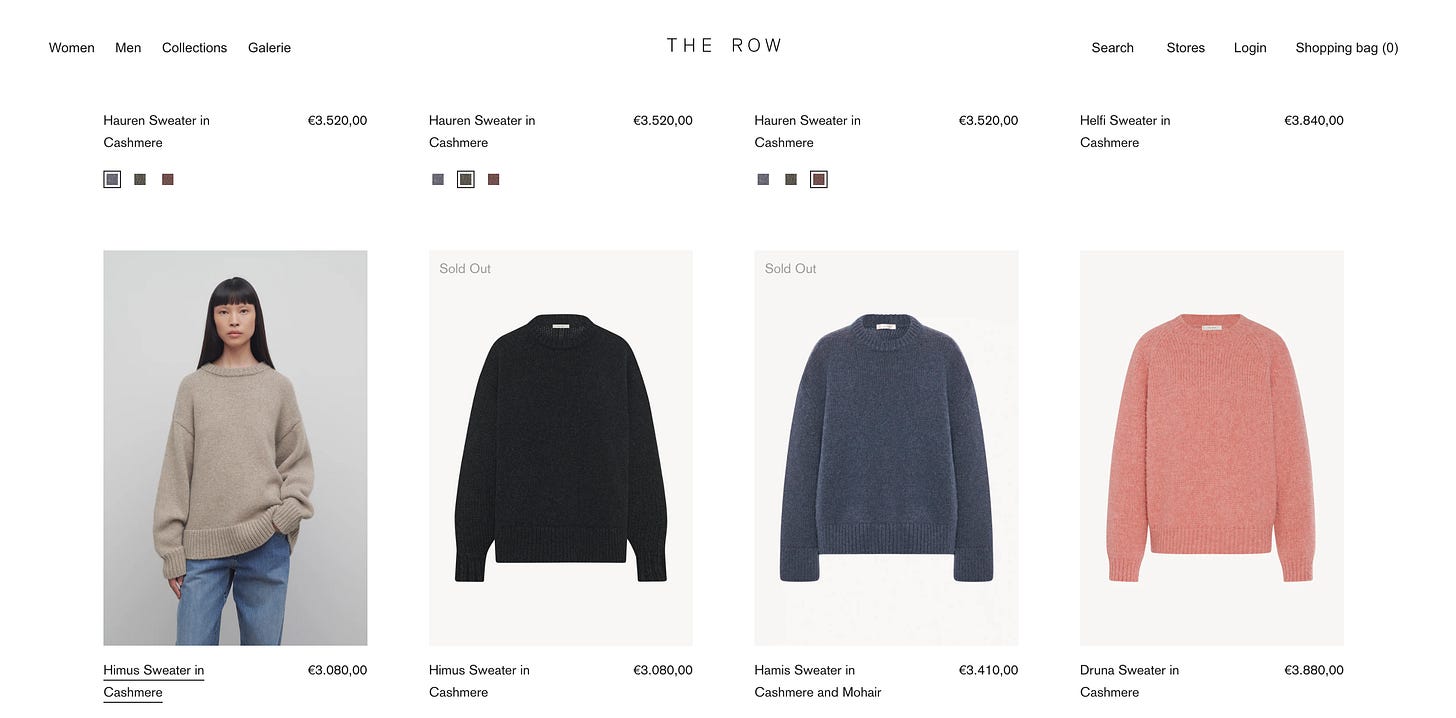Let’s Talk About ‘Effortless Style’—What Even Is It?
The irony is that it takes effort to look effortless.
“Effortless style” is one of those concepts that gets thrown around constantly, but the more you think about it, the less it actually makes sense.
It’s the holy grail of fashion—the ability to look like you just happen to be incredibly well-dressed without a second thought.
But why are we so obsessed with looking like we didn’t try?
And why is it that women are expected to master this paradox—striving for a look that requires effort while making sure no one sees the effort?
What Even Is Effortless Style?
The definition of “effortless style” seems to shift depending on who you ask, which is probably why it’s so hard to pinpoint exactly what it is.
For some, it’s the classic French-girl look—natural makeup, messy hair, and an oversized blazer. Others see it as the “model off-duty” vibe—low-slung jeans, ribbed tanks, and a certain kind of confidence. Then there’s the minimalist take: clean lines, muted tones, and a perfectly curated wardrobe.
I have come to the conclusion that “effortless style” actually isn’t about a specific aesthetic. It’s more about looking like you didn’t try too hard, even if you definitely did.
It’s a balance of polish and nonchalance, intention and ease. A slouchy sweater, for example, can look effortlessly chic on one person but frumpy on another, depending on the details—the fit, the confidence, and the subtle styling choices.

At the end of the day, effortless style is personal. Or at least that’s what I think it should be.
Because when we admire someone for looking effortlessly chic, it’s not just about the certain pieces that they wear.
What we’re really noticing is the result of thoughtful styling, well-fitted pieces, and a deep understanding of personal style.
That’s why for me, “effortless style” is more about how pieces are worn and how they make you feel. It’s about finding pieces that are simple, easy to wear, and make me feel good.
It’s not about pretending not to care—it’s about choosing well-fitted, well-styled pieces that create a relaxed yet put-together vibe.
So with that said, I want to explore the different angles of effortless style—where it comes from, how society defines it, why some people seem to pull it off more easily than others, and ultimately, how you can make it your own.
Can effortless style ever truly be effortless? And if so, how do we achieve it?
The Myth of “Effortless”
The biggest misconception about effortless style is that it requires zero thought.
In reality, it’s the opposite.
The reason some people seem to always look effortlessly put together is because they’ve already done the work. They’ve curated a wardrobe where everything fits well, plays nicely together, and aligns with their personal style. They’ve figured out what silhouettes work for them, which color palette feels natural, and how to balance an outfit so it looks interesting but not overdone.
The actual ‘effortless’ part comes later—when getting dressed feels seamless because the foundation is already there.
Essentially, it’s an illusion, and a carefully crafted aesthetic that relies on knowing what works for you.
Even the classic “French girl” aesthetic—a style often held up as the pinnacle of effortlessness—is a carefully constructed illusion.

Caroline de Maigret, one of the women most associated with the look, has openly admitted that there’s nothing effortless about it. The undone hair, the just-slouchy-enough blazer, the barely-there makeup—it’s all meticulously curated!
The Key Ingredients of Effortless Style
Even though “effortless style” can feel easy to recognize but nearly impossible to define, there are definitely some common themes that come up over and over again when we talk about what makes an outfit feel effortless.
So, what’s the difference between looking naturally put-together and looking like you tried a little too hard?
I think these are the key factors that really make all the difference:
Fit Is Everything – The right fit can make even the simplest outfit feel intentional. Take a t-shirt and jeans, for example—if they fit perfectly, you’ll look ten times more polished than someone in a trendy, ill-fitting outfit. If you’re constantly adjusting, taping, or fussing over something, it’s lost the effortless vibe. The best outfits feel like a second skin—you’re not thinking about them, you’re just wearing them.
Confidence (Yes, Really) – Effortless style has a lot to do with how you wear an outfit, not just what you’re wearing. Someone who feels good in what they’re wearing will always look more put together than someone adjusting their clothes every five minutes.
A Little Restraint – Effortless outfits often have a sense of balance, which usually means not overcomplicating things. If the clothes are minimal, you might add a statement accessory. If the hair and makeup are bold, the outfit stays simple. It’s that subtle push-and-pull that keeps things feeling natural and not overdone.
Consistency – People who always seem to look effortlessly stylish tend to stick to a personal uniform—certain silhouettes, colors, or styling choices that just work for them.
So the common thread in effortless style is simplicity and ease. Not necessarily ease in putting an outfit together, but ease in wearing it.
I believe that when an outfit feels natural and comfortable to the person wearing it, confidence follows, giving you that laid-back, effortless vibe.
Why Some People Look Effortless and Others Don’t
This is a topic I find both important and a little controversial, but I think it’s one worth addressing—especially if you’re someone (like me) who has explored, or struggled with, the idea of creating an effortless style.
The reality is, some people have an easier time pulling off that “effortlessly chic” look. But this has less to do with personal effort and more to do with society’s ingrained standards and expectations.
Certain body types, features, and even ethnic backgrounds naturally align with what’s been upheld as the ideal “effortless style.”
As someone who is short with Asian features, I’ve definitely felt the weight of these expectations.
Growing up, I was constantly bombarded with images of tall, slim Western women as the epitome of “effortless style.” And for a long time, I thought I had to fit into that mold.
For example, oversized, flowy silhouettes tend to look effortless on a tall, lean frame but can overwhelm someone petite if not styled carefully. Similarly, someone with naturally tousled hair might have an easier time pulling off that “undone” beauty look, while others need an hour (and a lot of product) to make their hair look intentionally messy.
It’s not that these styles don’t work on different body types or backgrounds—it’s that our perception of what looks “effortless” is shaped by societal norms that don’t account for diversity. And that can make some of us feel like we’re always trying to catch up.
I also think this pressure falls especially hard on women. We’re supposed to look polished but not too polished, stylish but like we didn’t try too hard.
There’s this unspoken rule that you should just naturally look put-together—like effortlessness is something you either have or you don’t.
Then, on top of that, there’s the role of class and privilege.
True ease—both in style and in life—is often a luxury not everyone can afford.
Take The Row, for example, founded by Mary-Kate and Ashley Olsen.
Their brand is synonymous with quiet luxury and effortless minimalism, yet their pieces are meticulously designed, with perfect tailoring and the highest-quality fabrics.
There’s a reason their $3,000 cashmere sweaters drape oh so effortlessly. In their world, it’s engineered.
So when we talk about effortless style, we’re often talking about things that take resources—whether that’s money, time to curate and refine, or simply access to the right knowledge.
But that doesn’t mean effortless style is exclusive to a select few.
It does mean, however, that the concept is shaped by cultural norms. And unfortunately, those norms don’t always make space for everyone.
At the end of the day, I believe effortless style isn’t about meeting some outside standard—it’s about finding what feels natural to you.
But I also think it’s important to understand where these standards come from, instead of just accepting the idea that “some people naturally look effortless, and others don’t.” The key is figuring out what your version of effortless is, even if it’s not exactly what society tells us it should be.
Creating Your Own Version of Effortless Style
Now that we have a better understanding of what effortless style is—or at least my take on it, haha!—I want to share some of my personal experiences in curating this style and the lessons I’ve learned along the way.
Keep reading with a 7-day free trial
Subscribe to Making Fashion Make Sense to keep reading this post and get 7 days of free access to the full post archives.




